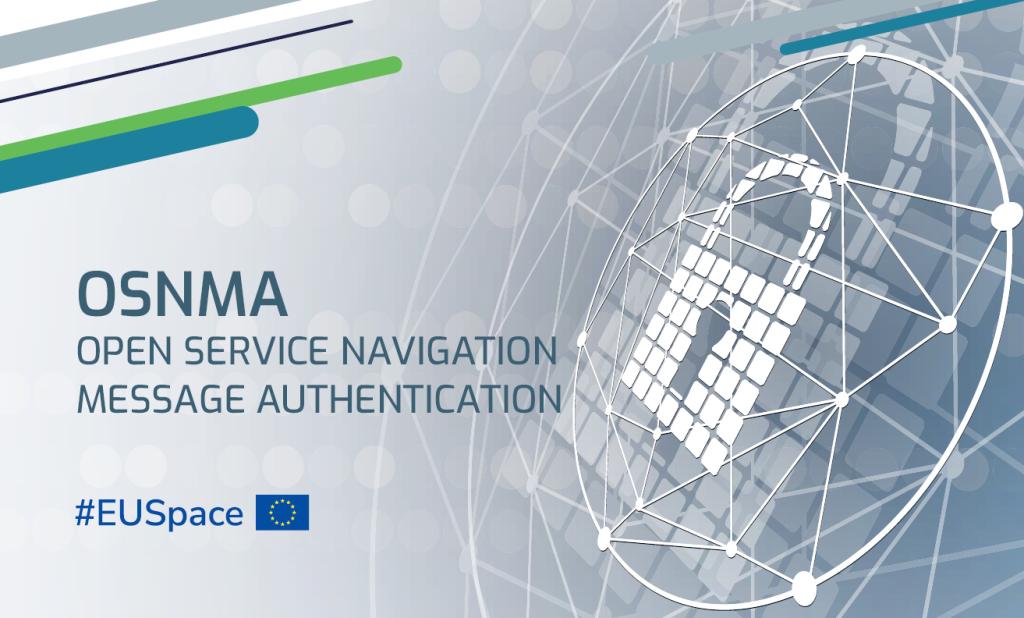Galileo is getting ready for the upcoming OSNMA operational declaration

Galileo, like any other Global Navigation Satellite System (GNSS), is used by many critical applications in transportation, finance, telecommunications, information technology, energy, utilities, manufacturing, health services, emergency services and law enforcement. Access and knowledge to perform spoofing attacks are, however, increasing, resulting in disruption or denial incidents being more frequently observed. The Galileo Programme, including EUSPA, the European Commission (EC) and the European Space Agency (ESA) has therefore developed and integrated an Open Service Navigation Message Authentication (OSNMA) capability into the Galileo infrastructure and operations.
The OSNMA Public Observation phase started in November 2021. It was supported by the publication of the Signal in Space Interface Control Document (SIS ICD) and the Receiver Guidelines, allowing the early testing of OSNMA receivers worldwide. Since then, the OSNMA signal has been transmitted by Galileo satellites almost uninterruptedly and with very high stability and performance, as those entities processing the OSNMA signal have reported.
In December 2022, EUSPA and the EC jointly published the OSNMA SIS ICD and OSNMA Receiver Guidelines for the service phase, with updated releases providing complementary information published between October 2023 and January 2024. In addition, the OSNMA Internet Data Distribution (IDD) ICD was published in July 2023 and updated in January 2024, concurrently with the publication of the OSNMA operational cryptographic material. The OSNMA Signal In Space has been transmitted in alignment with these specifications since August 2023. Testing activities performed over the past months by industry and public actors have confirmed the readiness of the service. Therefore, the OSNMA SIS ICD v1.1, OSNMA Receiver Guidelines v1.3 and OSNMA IDD ICD v1.1 are the ones to be used when the service becomes operational. The latest cryptographic material to be used by the receiver to exploit OSNMA service was published by EUSPA in January 2024 and is accessible, together with the required certificates through the EUSPA and GSC websites. The OSNMA operational cryptographic material and associated certificates are the ones applicable for the Initial Service provision phase.
The behaviour and performance of the OSNMA signal observed over the last months of testing are nominal and representative of the operational phase. The testing activities were concluded in early June 2024 with the execution of cryptographic keychain renewal and revocation processes. They were timely announced to users subscribed to the Public Observation Phase. The Programme is now preparing the forthcoming OSNMA Initial Service declaration. A dedicated Galileo Service Notice will be soon published, notifying of the conclusion of the testing activities of the Public Observation Phase.
The OSNMA Initial Service Declaration will consist of a formal process including an EC communication, the publication of the OSNMA Service Definition Document (SDD), and the transition of the OSNMA Status Flag from ‘test’ to ‘operational’, in a similar process as that followed in 2023 for the Galileo High Accuracy Service (HAS) Declaration.
Further information about the Galileo OSNMA applicable specification, cryptographic information, and performance expected for Service Declaration can be found here.
Media note: This feature can be republished without charge provided the European Union Agency for the Space Programme (EUSPA) is acknowledged as the source at the top or the bottom of the story. You must request permission before you use any of the photographs on the site. If you republish, we would be grateful if you could link back to the EUSPA website (http://www.euspa.europa.eu).
